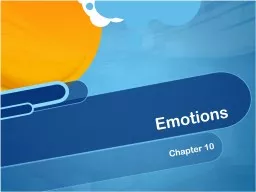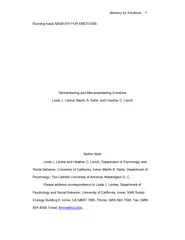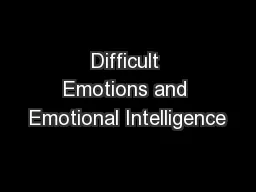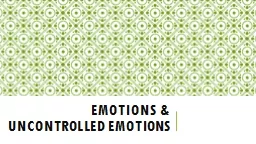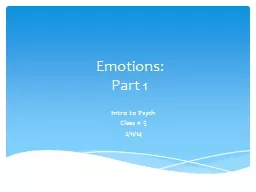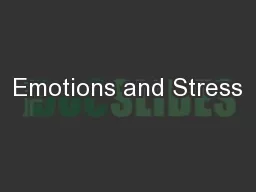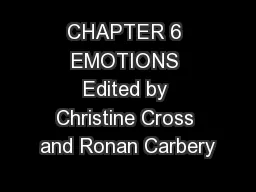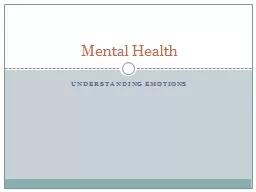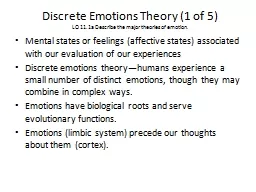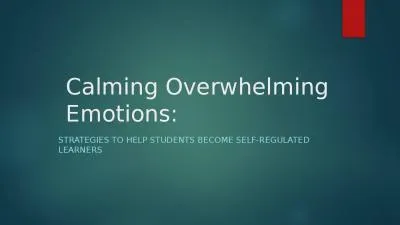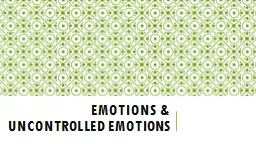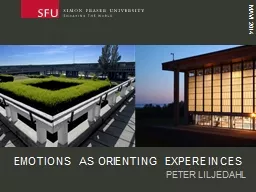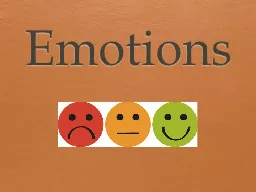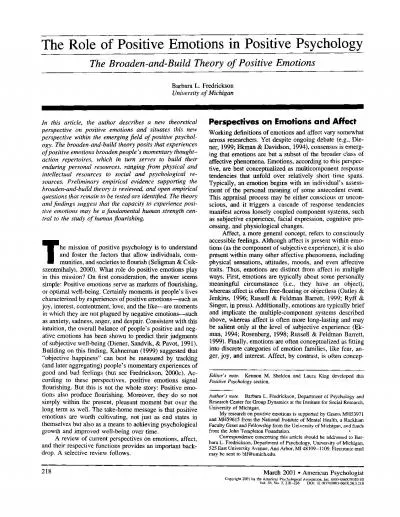PPT-Chapter 10 Emotions What are emotions?
Author : briana-ranney | Published Date : 2018-02-17
Emotions are a mix of bodily a rousal physiological c onscious experience cognitive overt e xpressions behavioral Mnemonic ACE Emotions are expressed on the
Presentation Embed Code
Download Presentation
Download Presentation The PPT/PDF document "Chapter 10 Emotions What are emotions?" is the property of its rightful owner. Permission is granted to download and print the materials on this website for personal, non-commercial use only, and to display it on your personal computer provided you do not modify the materials and that you retain all copyright notices contained in the materials. By downloading content from our website, you accept the terms of this agreement.
Chapter 10 Emotions What are emotions?: Transcript
Download Rules Of Document
"Chapter 10 Emotions What are emotions?"The content belongs to its owner. You may download and print it for personal use, without modification, and keep all copyright notices. By downloading, you agree to these terms.
Related Documents

